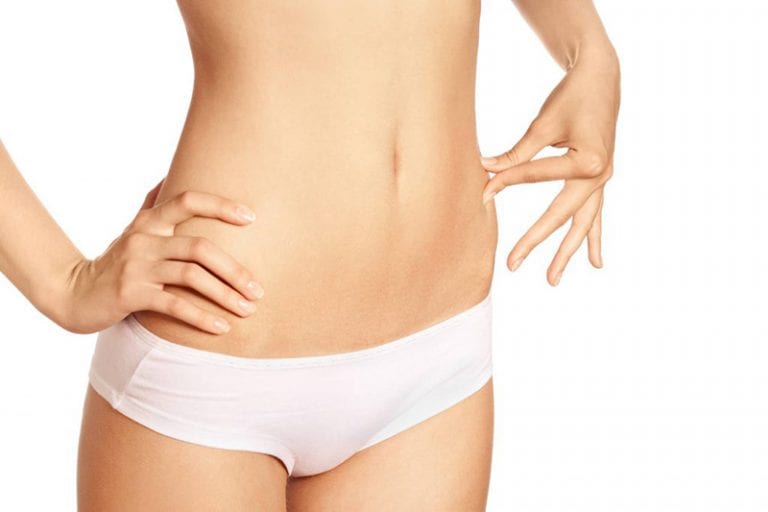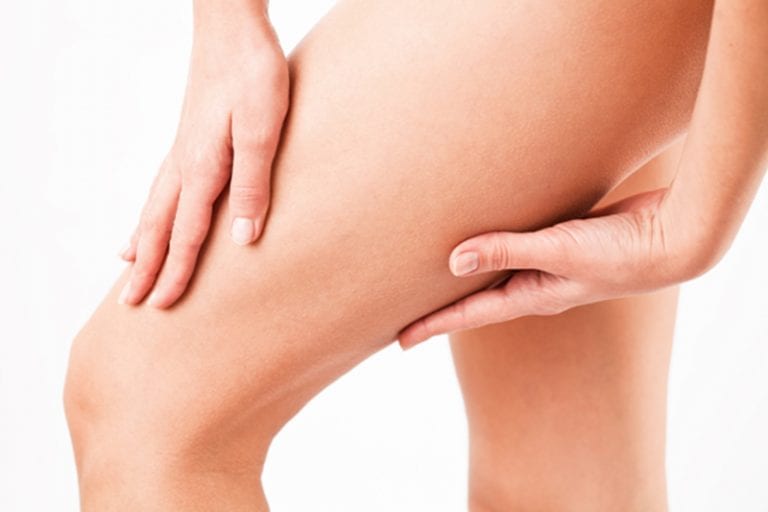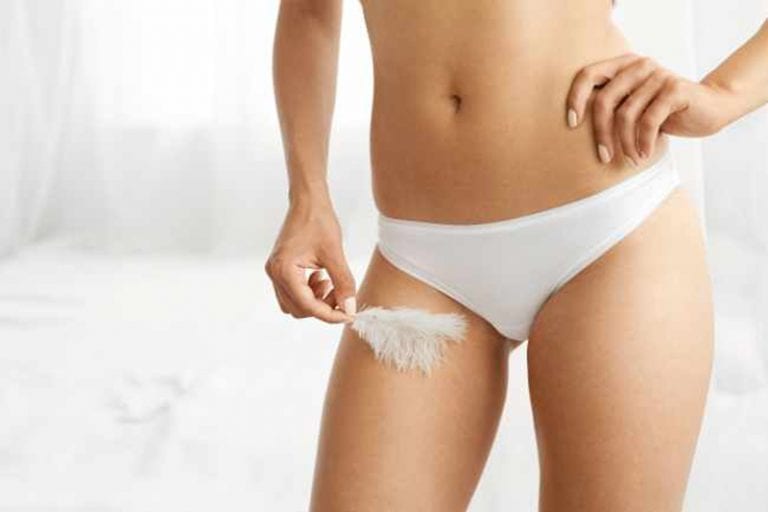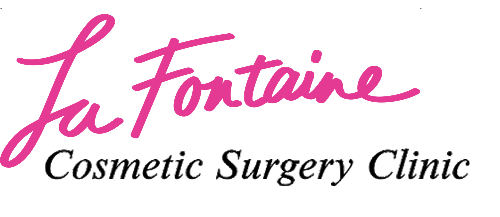1. Candidates for Liposuction
2. Types of Liposuction
3. Before Liposuction Surgery
4. After Liposuction Surgery
What is the difference between abdominal liposuction and a tummy tuck?
Liposuction in Toronto
Liposuction is a cosmetic surgery where excess fat in specific areas is removed through a procedure that involves an incision and vacuum suctioning. The fat that is removed is typically located directly under the skin. During the procedure, a small incision, no larger than half an inch in length, is made in the area where fat is to be removed. A suction cannula is then inserted into the fatty tissue. A cannula is a thin tube that is used in many types of surgeries. During a liposuction procedure, the cannula is shifted back and forth to loosen fatty tissue, allowing it to become easier to remove. A liposuction procedure can last between 1- 3.5 hours depending on the amount of fat to be removed and the specific areas being re-sculpted.
The results of liposuction body contouring have left many patients feeling satisfied and pleased with their new bodies. They end up feeling more comfortable with themselves and trying a wider variety of clothing. The results of liposuction can remain permanent as long as patients eat healthily and exercise regularly to maintain shape and health. If weight is gained, it is most likely to spread in a more uniform manner. It is always best to have reasonable expectations with any surgery to ensure satisfaction of results.
We help patients achieve their desired body shaping goals. We pride ourselves in offering patients the most knowledgeable, experienced and caring doctors. Most procedures involve small incisions that leave virtually invisible scars. The final results of each surgery are sure to leave you feeling more confident in yourself and your body.
Contact Us
Candidates For Liposuction
You may dislike certain areas of your bod caused by fatty tissue. You may have tried to lose weight by dieting and exercising, which are certainly good methods for maintaining overall health. You may have actually lost your desired weight but have had difficulty maintaining your hard work. You probably have certain parts of their body that just seem dis-proportioned to the rest of your body due to stubborn fat bulges in specific areas. This is where liposuction can help people achieve their goals for their body shape, enhancing their self-esteem and confidence. Most areas where people find stubborn fat are: thighs, abdomen, buttocks, chin, cheeks, knees, neck, jowls and waist. Some men suffer from excess breast tissue that can also be removed through liposuction. Liposuction can be beneficial for many types of people; however, there are certain cases where liposuction would not be appropriate.
At La Fontaine Source De Jeunesse Cosmetic Surgery Centre Liposuction is a safe and effective procedure used to remove localized fat deposits in any part of the body. Those who want to undergo liposuction must fall under the following conditions:
- Be no more than 20 pounds overweight
- Be in good physical health
- Have realistic expectations regarding the surgery
- Have a stable weight
- Have lost weight prior to procedure
In order for the surgery to yield the most attractive results, it is best for patients to have firm, elastic skin. The skin must shrink after the procedure is done so the area from where the excess skin has been removed will not appear saggy. Skin loses elasticity as people age, but this does not mean that older patients cannot undergo liposuction and have great results.
Liposuction is not appropriate for patients who are overweight and simply want to remove large amounts of fat from their bodies without eating healthily or exercising. Those whose fat is primarily internal, known as visceral fat that is stored behind internal organs, cannot be treated by liposuction. Liposuction is not a treatment for obesity, nor can it remove cellulite. Liposuction is usually the preferred solution if dieting and exercise are unable to help patients achieve their desired body goals.

Types of Liposuction
There are many types of liposuction techniques that are used to treat different areas of the body and different types of fat deposits. These include: tumescent liposuction, powered liposuction, SAFE liposuction, Smart liposuction, VASER (ultrasound) liposuction, water jet liposuction and radio frequency assisted liposuction (RFAL).
Tumescent Liposuction- “Tumescent” means swollen and firm. In tumescent liposuction a large amount of diluted local anaesthesia is injected directly into the fat beneath the skin. The area then becomes swollen and firm. Because the anaesthetic is directly placed on the area of fat to be removed, it is not necessary to use general anaesthesia or IV sedation. Furthermore, the epinephrine in the local anaesthetic causes the capillaries to constrict which significantly decreases surgical bleeding. Tumescent liposuction is the safest liposuction procedure, being less painful than all other liposuction surgeries. Moreover, post-operative recovery time is minimized due to the very small amount of bleeding that takes place during and after this surgery.
Powered or Power Assisted Liposuction- Power assisted liposuction procedures use devices that supply power through electric motors or compressed air during surgery. The devices cause the cannula to either rapidly spin or move in and out in order to remove tough fat deposits easier. This method allows surgeons more precision and decreases pain and swelling.
SAFE Liposuction- SAFE stands for Separation, Aspiration, Fat Equalization. This procedure uses a 3-step process. First, powered liposuction is done on the patient to separate fat from surrounding tissue. Next, fat cells are gently removed in order to leave blood vessels and tissue intact. A thin fat layer is left behind to reduce swelling and internal scarring. Lastly, the remaining thin layer of fat is evened out to leave a smooth, natural-looking finish. This step also diminishes the risks of skin contouring irregularly.

Types of Liposuction
Smart Liposuction- Smart liposuction involves a local anaesthetic being used near the area where fat is to be removed. A small incision is made in the area and a Smartlipo brand laser is inserted through a tube into the body, breaking apart fat cell membranes. The broken fat is now liquefied and becomes easier to be suctioned out. According to makers of the Smartlipo brand laser, collagen is supposed to form in the area where the procedure was done to cause skin to tighten. Smart liposuction is a technique known for skin tightening after surgery. However, it has not always lived up to its acclaimed status, leaving doctors to hesitate using this technique for liposuction.
VASERshape or Ultrasound Liposuction- Ultrasound liposuction is a non-invasive procedure, meaning that there are no incisions or surgeries required. Instead, this technique combines ultrasound and massage to smooth areas of the body. The treatment involves heating the area and then massaging it to warm connective tissues and increase local blood circulation. This process helps to smooth fatty areas of the body and temporarily reduce the appearance of cellulite.
Water Jet Liposuction- Water jet liposuction uses a pressurized stream of saline and tumescent fluid to remove fat and fat cells. This method does not destroy fat cells, but gently removes them. Once the local anaesthesia is inserted, a cannula is used to suction the loosened fat from the body and remaining fluids are removed. This type of liposuction procedure is considered to be quite gentle and less invasive than others. Further, because using water causes less damage to tissues, there is usually less swelling and bruising after surgery.
Radio Frequency Assisted Liposuction- This technique of liposuction uses electric currents to literally melt fat deposits before removal. Small incisions are made in the arrears where fat is to be removed and a probe, along with electric currents, are inserted until the fat deposits melt. A cannula is then used to suction out the fat. The heat used during the procedure causes the body tissues to naturally contract and tighten for a smoother finish. This technique is considered gentler than others because the cannula used is smaller, leading to less scarring.
There are several other techniques for conducting liposuction. However, some either come with great complications and risks or have not been approved by the Food and Drug Administration. Some techniques are less or non-invasive than others, but yield different or temporary results from invasive surgeries. La Fontaine Source De Jeunesse Cosmetic Surgery Centre typically conducts liposuction surgery using the tumescent technique because it is the safest and least painful type of liposuction.

Before Liposuction Surgery
Before undergoing any surgery at La Fontaine Source De Jeunesse Cosmetic Surgery Centre, each patient will be thoroughly assessed by a doctor to determine their health status and which type of surgery(ies) would be most appropriate to meet his or her goals. In the case of liposuction, doctors will examine the patient’s body to see where fat deposits sit most, as well as assess the patient’s skin tone. It is very important that patients are honest with doctors about their health status and goals for surgery. Specifically, patients should inform doctors of any major fluctuations in weight and if they smoke or use drugs and medications. This way, doctors can give the most appropriate and beneficial recommendations. In relation to fat deposits, other surgeries such as an abdominoplasty (tummy tuck) may be considered to provide the best results of body contouring. Once the most appropriate measures are determined, doctors will discuss with their patients how each procedure is conducted and what to do before and after surgery. Doctors will let patients know if any weight is to be lost before surgery and will also notify patients of any risks and limitations involved in the surgery. Moreover, they will discuss with patients the anaesthesia to be used during surgery, where the surgery will be done and the costs involved.
For more extensive liposuction surgeries, a doctor at La Fontaine Source De Jeunesse Cosmetic Surgery Centre may recommended that patients draw blood before surgery. This blood can help to replace the blood and other fluids that are lost during surgery.
Specific instructions will be given by a doctor on how to prepare for surgery. Patients will most likely have to follow certain guidelines regarding eating, drinking and smoking. Certain vitamins and medications may either need to be taken or avoided prior to surgery.
A liposuction procedure will be postponed if the patient develops any type of infection prior to the surgery.
Patients are normally released shortly after the procedure, depending on what surgery is done. However, patients will need someone to drive them home after the surgery and may require assistance for a couple days after the procedure. Patients should make arrangements for a ride prior to surgery.
Areas That Can Be Treated With Liposuction
Abdominal Liposuction
The most common area that patients choose to have liposuction surgery done is the abdominal area. Many people dislike the layer of fat that may hang over or bulge in their abdominal area. Further, since this area is usually the hardest to remove fat through dieting and exercise, liposuction is considered. During abdominal liposuction surgery three incisions are made: one in the navel and two below the bikini line. A doctor at La Fontaine can discuss with patients more on the precise areas to be treated during abdominal liposuction surgery. Liposuction in abdominal area may make stretch marks in this area appear more wrinkled. Although liposuction in the abdominal area can help a patient’s belly appear flatter and smoother, extra hanging skin may better be treated with an abdominoplasty, or tummy tuck.
Thigh Liposuction
Patients who dislike their thighs because they rub together or protrude outward consider liposuction on their inner or outer thighs. Liposuction can also be done on the front and back of thighs. During liposuction surgery of the outer thigh an incision is made at the fold of the buttocks. During surgery of the inner thigh, an incision is made in the groin crease. When doing liposuction for the front or back of the thighs, the procedure calls for a more tailored approach as the shape of patients’ thighs differ and the area where an incision is made can affect how well the skin maintains its shape after surgery.
Liposuction of the buttocks can also be done for patients who feel their buttocks project too much outward. However, for patients who believe their buttocks is too wide, it is advised that outer thigh liposuction be done.
Flank Liposuction
Each side of a person or animal is formerly called a flank. Many people have a layer of fat that hangs on the side of their waists, which are commonly called “love handles.” Liposuction is one solution for removing love handles and getting a smoother figure around the waistline. Men are common patients of flank liposuction. During liposuction of the flank, patients lay on their stomachs and two small incisions are made below the bikini line so scars are more hidden. The procedure is then directed from the top of the buttocks to the top of the waist and outward toward the flanks.
Arm Liposuction
Some people suffer from having excessively bulky arms and seek liposuction to correct this aesthetic problem. They may feel that their bulky arms are disproportioned to the rest of their body. This is not to be confused with having saggy arm skin, which cannot be corrected with liposuction. An arm lift might be more beneficial in that case. During arm liposuction surgery, incisions are made on the back of the arm above the elbow.
Back Liposuction
Patients often complain of back fat, which is a roll of fat just below the bra line. Some find it unattractive when this roll of fat shows through clothing or is emphasized by bra straps creasing into them. Liposuction can be a great solution to removing this roll and creating a sleeker looking back. During liposuction surgery of the back, incisions are made along the mid back line, allowing scars to be covered by clothing or a bra strap.
Inner Knee Liposuction
Some patients may find that they have a bulge of fat in their inner knees that may protrude through tight fitting, or light-coloured pants. During liposuction of the inner knee, an incision is made either at the front or the back of the knee.
In order for patients to fully understand and get the most appropriate advise on which procedure should be done to fulfill their goals, it is important that patients consult with a doctor at La Fontaine prior to undergoing any type of liposuction. Doctors at La Fontaine want to give patients their desired look using the most appropriate measures to ensure success and the least amount of pain and scarring. A consultation at La Fontaine Source De Jeunesse Cosmetic Surgery Centre involves speaking face-to face with a plastic surgeon. Doctors will explain everything that occurs during a liposuction procedure, how it can be beneficial and what should be expected after surgery. Doctors will be happy to answer any questions regarding liposuction that patients may have, as they strive to provide the most comfortable care.
Doctors will also examine patients to assess if liposuction is the most appropriate procedure to fulfill their goals. If doctors at La Fontaine believe that another type of cosmetic surgery or method would be best, they will notify patients and suggest other ways for them to achieve their goals.

After Liposuction Surgery
In order to carefully handle any bleeding or swelling that may occur during or after surgery, patients will be given a special garment to compress the area being treated and provide support. The garment will include tape and gauze that will be applied to incisions to absorb drainage. The small amount of drainage of blood and fluid used during surgery may continue after surgery, so it is advised that patients continue to dress their incisions with gauze and compression. Doctors will give patients more specific instructions on how to care for their incisions after surgery.
Post-liposuction surgery will most likely result in some swelling, soreness and bruising in the area that was treated. Wearing compression garments up to 6 weeks after surgery will help the body maintain its new shape and help decrease swelling. Soreness may last up to 3 days after surgery, while bruising goes away in about 2 weeks. However, it is typical for patients to return to regular work activity within a week after surgery. More aggressive forms of activity, such as exercise, may need to be put off for a couple of weeks after the procedure. Patients will be able to shower the day after their surgery, but instructions on how to remove and reapply the garment and dressing will be given by doctors.
Doctors at La Fontaine believe it is important that they follow up with their patients to carefully assess the progress of their procedures and be aware of any complications. Therefore, follow up appointments will be made so that patients will have a better idea of the progress of their healing and be properly advised on what activities can and cannot be done until full recovery. It is important that patients maintain a healthy diet and exercise in order to sustain their new body shape after the procedure is done.
Possible Risks and Complications
As with any procedure, there are possible risks of complications arising. Although it is rare for La Fontaine patients to experience complications, it is important that they remain aware of any possibilities. It is possible for severe trauma to occur if multiple areas undergo liposuction at the same time. Any new experiences to the body can cause shock. Furthermore, fluid may accumulate in the area of the procedure, which would need to be drained. On the other hand, excessive fluid may be lost during surgery or after surgery that can cause infection and illness. The skin may also become damaged, rippled, saggy and/or develop changes in pigmentation. Brown spots may appear in the treated area and become permanent if exposed to the sun. In rare cases, usually due to saggy skin, the shape of the skin in the area that was treated may become uneven, posing the need for another surgery to correct the problem. It is best that patients carefully follow the instructions given by doctors at La Fontaine to avoid any infections or complications. Patients should make sure that any doctor they consult with is licensed, experienced and uses proper equipment. Patients at La Fontaine can rest assured that all La Fontaine doctors are experts in liposuction and take great care in their work.
Frequently Asked Questions
How long do results from liposuction last?
Liposuction surgery at La Fontaine Source De Jeunesse Cosmetic Surgery Centre is intended to last for a lifetime. However, this can only be done if patients avoid gaining weight. Maintaining healthy eating habits and exercising regularly will certainly help patients to keep their desired shape after surgery.
Can you transfer fat using liposuction?
Yes. Getting liposuction using a technique that uses water to maintain fat cells can be done to remove fat from one area and transfer it to another area for enhancement. Typically fat is transferred to breasts, buttocks, face and hands. Speak to one of our doctors at La Fontaine Source De Jeunesse Cosmetic Surgery Centre to learn more about this procedure and find out if it is right for you.
However, other areas of the body can undergo liposuction. Speak to a doctor at La Fontaine for more information.
Should I do liposuction surgery before or after pregnancy?
Liposuction will not affect pregnancy. However, women tend to gain weight after pregnancy, so even if you had liposuction before getting pregnant, a tummy tuck may be necessary after having a child. It all depends on whether you want body contouring before or after having children.
Are there any life-threatening risks with liposuction?
It is very rare for complications, especially life-threatening ones to occur with liposuction. Common risks include small irregularities in contouring, bleeding and infection. Doctors at La Fontaine will follow up with patients to ensure their healing process is going smoothly.
How much does liposuction cost?
The costs for liposuction vary depending on the area being treated. It is more expensive to treat multiple areas at once, as oppose to treating one area alone.
What is the safest type of liposuction procedure?
At La Fontaine, the most used liposuction technique is tumescent liposuction because it uses a local anaesthetic and includes a very small incision to minimize bleeding.
Is liposuction painful?
Any surgery includes some degree of pain and discomfort. However, liposuction is not as painful as one may think because special care is used to provide anaesthetics and medications are given to reduce pain after surgery. Speak to a doctor at La Fontaine to learn more about liposuction techniques and the pain involved in each.
How many areas can I have liposuction done in one session?
It can be dangerous to remove large amounts of fat at once, not to mention the amount of fluids that you can lose. Too much liposuction can leave the skin saggy. Some layer of fat is necessary for cushioning and a smooth appearance. Doctors at La Fontaine will first need to do an assessment to properly determine how much fat could be removed from your body in one session. It is likely that more than one procedure would need to be done in order to take care of multiple body parts.
How long does the liposuction procedure take?
Liposuction surgery can last from 1 hour to 3.5 hours depending on the areas being treated. Patients are usually released the same day of surgery.
Will I feel weak after the surgery?
You may feel weak or dizzy for a few days after surgery if an excessive amount of fat is removed from the body. Special instructions on how to care for yourself after surgery will be given.
How does smoking affect liposuction surgery?
Smoking slows down the healing process after surgery. If you smoke, it would be recommended that you stop smoking several months prior to your liposuction surgery.
Does liposuction remove cellulite?
Liposuction is used to remove fat closer to the skin. Unfortunately, cellulite is formed under the skin’s surface so liposuction cannot eliminate it.
What is the difference between abdominal liposuction and a tummy tuck?
A tummy tuck or abdominoplasty is a major surgical procedure requiring general anaesthesia. It involves liposuction to remove fat and a large amount of skin. Most patients find liposuction more effective than tummy tucks. In fact, liposuction is safer than tummy tucks and causes less scarring. Nevertheless, there are cases where a tummy tuck would provide results that fit better with patients’ goals.
What are compressive garments?
Compressive garments are specially designed girdles that are made to reduce bleeding right after surgery and decrease swelling during the healing process. Tumescent liposuction removes the risk of surgical bleeding, but doctors at La Fontaine still require that patients wear a compression garment for a period of time after surgery.
What expectations should I have of liposuction surgery?
Fat cells that are removed through liposuction will not grow back after surgery. However, if you gain weight after having liposuction, your body will most likely look like a larger version of the body you attained from surgery. The shape of your body will remain intact as long as skin remains elastic and smooth.
I would like liposuction but I am very anxious. What should I do?
It is normal for any person to have some level of anxiety before any type of surgery. Patients are usually nervous about pain or complications during and after the surgery. Although it is normal for liposuction surgery to include some soreness and tenderness after surgery, patients who have undergone liposuction using a local anaesthesia usually do not need any pain medication other than Tylenol or Advil.
Is getting liposuction with a general anaesthesia less painful than using a local anaesthesia?
Using a local anaesthesia results in much less pain than using general anaesthesia. Specifically with tumescent liposuction, patients may feel pain at three stages: during the injection of the tumescent solution, during the liposuction surgery and after the surgery. A specially trained doctor will know how to inject any fluid with very little pain. Once the tumescent anaesthesia has been injected, the actual procedure should be painless. Most of the pain occurs after the surgery has been done and is usually worse for patients who use general anaesthesia. Patients who have used local anaesthesia typically just need Tylenol or Advil for discomfort after the surgery. Patients who use general anaesthesia commonly need narcotic analgesics to ease pain. These analgesics usually have side effects of nausea, vomiting and chills.


